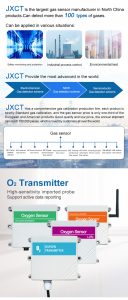Workplace safety is a top priority for any organization. One critical aspect of ensuring a safe working environment is effectively monitoring and detecting hazardous gases. Traditionally, gas detection devices have played a vital role in mitigating potential dangers. However, with advancements in technology, the introduction of advanced gas detectors has revolutionized gas detection and enhanced workplace safety to unprecedented levels. This article delves into the significance of advanced gas detectors in enhancing workplace safety, their innovative features, and the benefits they offer.
The Importance of Gas Detection in the Workplace:
In various industries such as manufacturing, chemical processing, oil and gas, and mining, workers are exposed to potentially harmful gases. These gases, if undetected, can lead to serious health issues, accidents, or even fatalities. Proper gas detection is crucial to identify the presence of hazardous gases promptly and implement appropriate safety measures to protect workers and the surrounding environment.
Evolution of Gas Detection Technology:
Traditional gas detection devices, such as single-gas detectors and multi-gas detectors, have been instrumental in ensuring workplace safety. However, advancements in technology have led to the development of advanced gas detectors that offer significant improvements in accuracy, sensitivity, response time, and usability.
Innovative Features of Advanced Gas Detectors:
a. Multi-Gas Detection: Advanced gas detectors are capable of simultaneously detecting and monitoring multiple gases. This feature allows for comprehensive monitoring of various hazardous gases that may be present in the workplace, including combustible gases, toxic gases, and oxygen levels.
b. Real-Time Data and Alerts: Advanced gas detectors provide real-time data on gas levels, enabling immediate action in case of a gas leak or elevated gas concentrations. They also generate audible and visual alarms to alert workers and initiate evacuation procedures when necessary.
c. Wireless Connectivity: Many advanced gas detectors come equipped with wireless connectivity options. This allows for remote monitoring and data transmission to a centralized control room, enabling real-time tracking of gas levels and facilitating prompt response to any potential hazardous situation.
d. Data Logging and Analysis: Advanced gas detectors can log gas concentration data over time, providing valuable insights into gas trends and exposure patterns. This data can be analyzed to identify potential areas of improvement in safety protocols, worker training, or ventilation systems.
e. Robust and Durable Design: Advanced gas detectors are built to withstand harsh working conditions. They are often ruggedized, water-resistant, and shockproof, ensuring reliable performance even in challenging environments.
Benefits of Advanced Gas Detectors: a. Enhanced Worker Safety: The real-time monitoring capabilities of advanced gas detectors significantly reduce the risk of exposure to hazardous gases. Early detection allows workers to evacuate immediately and take necessary precautions to prevent accidents and injuries.
b. Improved Emergency Response: Advanced gas detectors provide accurate and timely information on gas levels, helping emergency responders make informed decisions during incidents. This expedites their response time and ensures an efficient and effective resolution of the situation.
c. Compliance with Regulations: Many industries operate under strict regulations related to gas safety. Advanced gas detectors assist organizations in complying with these regulations by providing accurate monitoring and documentation of gas levels, thereby avoiding potential penalties and legal consequences.
d. Cost Savings: While the initial investment in advanced gas detectors may be higher than traditional devices, they offer long-term cost savings. Their improved accuracy reduces false alarms, downtime, and unnecessary maintenance costs.
e. Data-driven Decision-making: The data collected and analyzed by advanced gas detectors help organizations identify trends, assess risks, and implement preventive measures. This data-driven approach enables continuous improvement in workplace safety and mitigates potential hazards proactively.
Future Trends and Developments: The field of gas detection is continuously evolving, driven by technological advancements and the need for enhanced safety. Some future trends include the integration of gas detectors with Internet of Things (IoT) platforms, enabling seamless connectivity and data analytics for predictive maintenance and further improving safety protocols.
Conclusion:
Advanced gas detectors have brought about a significant revolution in workplace safety by providing accurate and real-time monitoring of hazardous gases. Their innovative features, such as multi-gas detection, wireless connectivity, and data analysis capabilities, greatly enhance worker safe
 : +86 155 8830 2704
: +86 155 8830 2704 : jxdziot@gmail.com
: jxdziot@gmail.com
